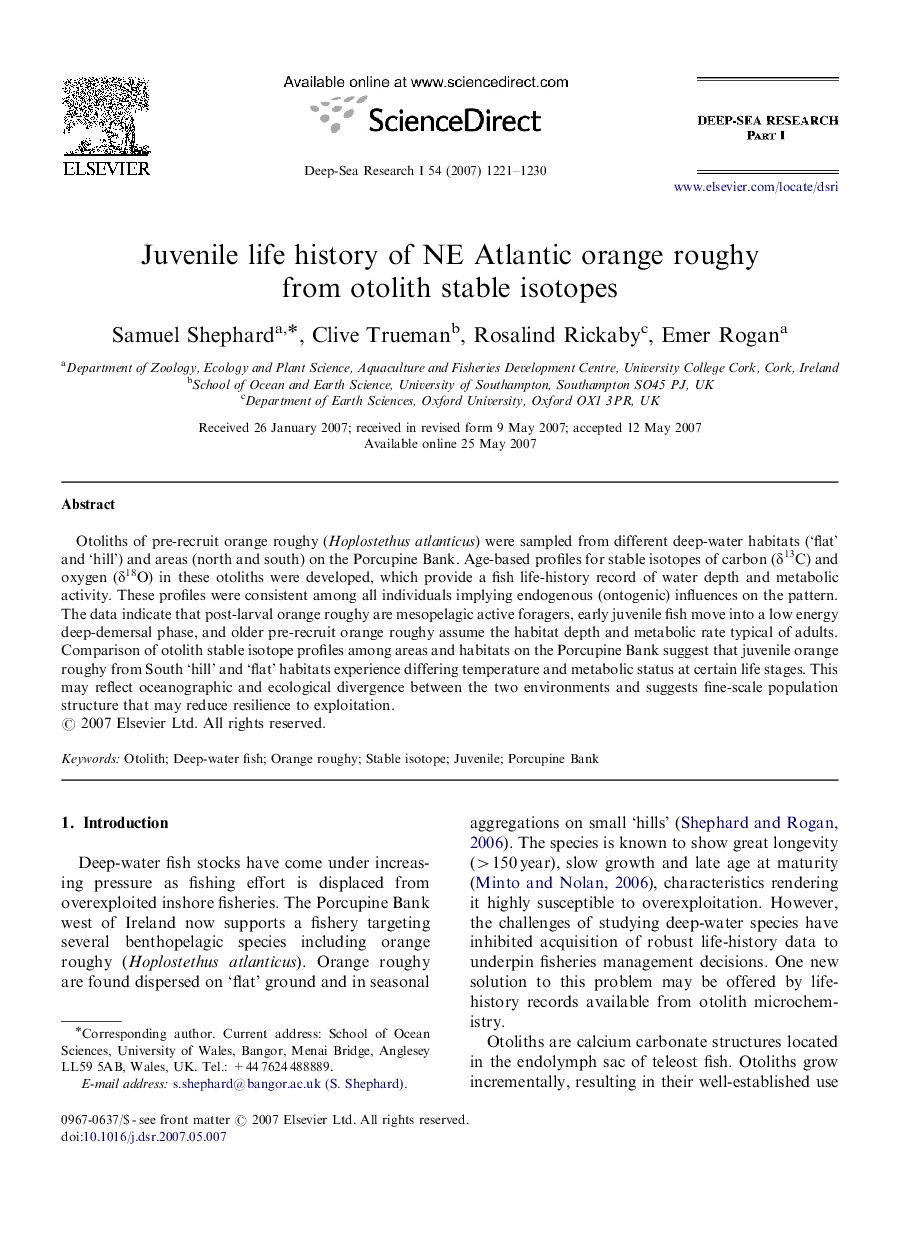| Article ID | Journal | Published Year | Pages | File Type |
|---|---|---|---|---|
| 4535356 | Deep Sea Research Part I: Oceanographic Research Papers | 2007 | 10 Pages |
Otoliths of pre-recruit orange roughy (Hoplostethus atlanticus) were sampled from different deep-water habitats (‘flat’ and ‘hill’) and areas (north and south) on the Porcupine Bank. Age-based profiles for stable isotopes of carbon (δ13C) and oxygen (δ18O) in these otoliths were developed, which provide a fish life-history record of water depth and metabolic activity. These profiles were consistent among all individuals implying endogenous (ontogenic) influences on the pattern. The data indicate that post-larval orange roughy are mesopelagic active foragers, early juvenile fish move into a low energy deep-demersal phase, and older pre-recruit orange roughy assume the habitat depth and metabolic rate typical of adults. Comparison of otolith stable isotope profiles among areas and habitats on the Porcupine Bank suggest that juvenile orange roughy from South ‘hill’ and ‘flat’ habitats experience differing temperature and metabolic status at certain life stages. This may reflect oceanographic and ecological divergence between the two environments and suggests fine-scale population structure that may reduce resilience to exploitation.
